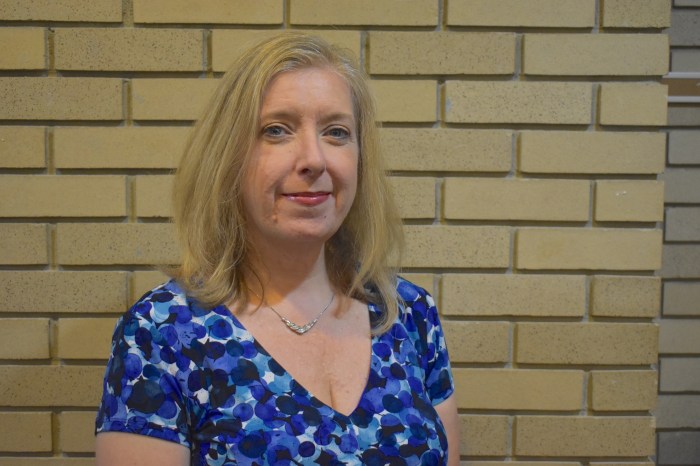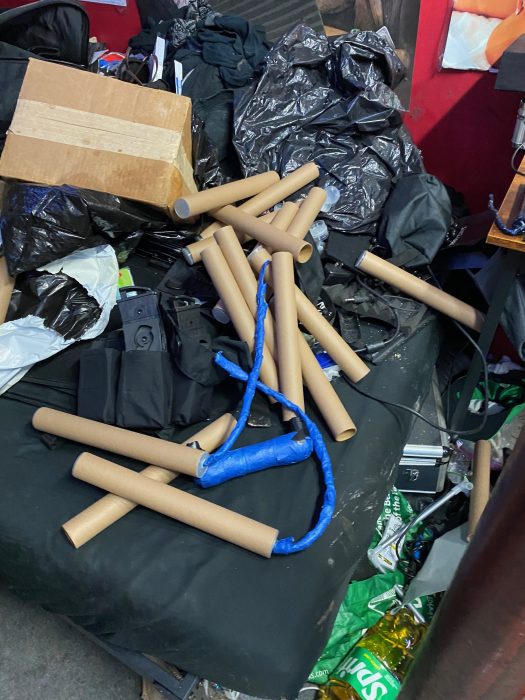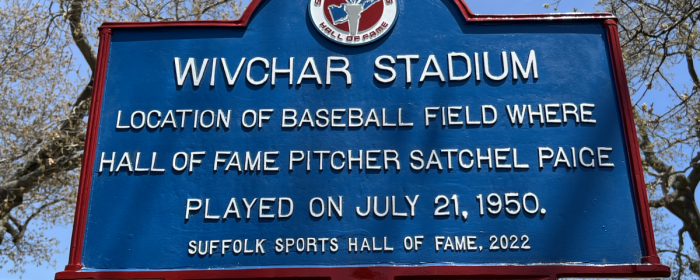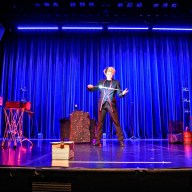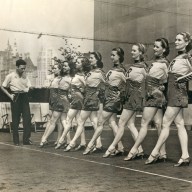Naval architecture students from SUNY Maritime visited the Ida May Project recently and had the volunteers nervous. One freshman woman was jumping from one plank to another on what will be the deck of the historic oyster dredge Ida May, but is now just a series of boards about 5 to 6 feet apart.
Volunteer ship builder Jim Brannigan explained, “We had to tell her, ‘you’re getting everyone nervous’ and she laughed and said, ‘I’ve just come back from two months at sea.’”
They showed the SUNY midshipmen the Ida May plans drawn out by Oyster Bay’s naval architect Ian McCurdy and they said, “He’s our professor!”
“Well, you’ve picked up some Brownie points,” Brannigan chortled. “Those kids were leapers.”
In Building J on Oyster Bay’s western waterfront, they are building a new Ida May, redesigning the oyster boat to adjust to Coast Guard regulations to make it safe for today’s standards.
“If not, we couldn’t take anyone out in it,” said Bill Shepherd of Plainview, a longtime volunteer.
The official keel laying took place on Dec. 9, 2011. It’s a labor of love, since each board is individually cut and shaped for installation. They have finished installing the ceiling, which is the inside of the boat against the ribs. Most recently, Shepherd successfully tried a new, easier process of steaming the wood to shape it for installation. During the first week in September, he made a “steam kettle” out of a large soup pot with a place for water to enter and a hose for steam to exit into a plastic steam bag containing the piece of planking to be bent. [He learned the skill from one of Hunt Lawrence’s craftsmen at Oakcliff Sailing Center.] On Tuesday, Sept. 8, they put two of the pieces in place with clamps and on Thursday returned to see that they had retained their shape.
“We can now paint it anytime,” said Shepherd.
Syosset resident Brannigan, a financial analyst retired from Wall Street said, “I use all my skills here, carrying things around and trying not to cause problems.”
The reason for being there was simple, he said: “Quoting what Ratty said to The Mole, ‘There’s nothing, simply nothing better than simply messing around with boats.’ It’s from the Wind in the Willows and it really sums it up for everybody.”
Building the Ida May is not a short-term project. Retired Oyster Bay Harbormaster Clint Smith, Christeen Corporation president who is the project leader, said, “We are working now with the volunteers and it is coming along nicely. Slowly but surely, we hope to have it in the water within three years.”
After it’s planked and the deck completed, they still have to build the deckhouse.
“It won’t fit in here so it will be built elsewhere,” Brannigan said.
There is a great deal of work on their list, including doing all the wiring, plumbing, putting in the motor, holding tanks and fuel tanks, but the next thing is planking the deck.
“We’re ordering the wood now and it takes about six weeks to arrive so we can use more volunteers then,” said Shepherd. “Keeping tabs on the work is the new project manager Ed Peterson, who just joined the board and comes with a fantastic background from running a machine shop at Sperry.”
Most of the men involved in the work have retired from professional jobs and are often learning new skills or using old ones in new ways. One of them is Bill Gyves of Mineola, a retired Verizon outside service technician. He was volunteering with Habitat for Humanity in Queens and Nassau counties, but he had to promise his wife he wouldn’t go up on roofs and so now works here and with Rebuilding Together making ramps for wheelchair access for vets at no cost. He learned about the Ida May Project from the office of NC Volunteer Services.
“This stuck out. I’ve worked with tools at Habitat for Humanity, but I told Bill I’ve never done this before. He said, ‘We’ll teach you.’ I’ve been doing it for two years,” said Gyves. He is looking forward to the next project of helping people build 16-foot skiffs along with the other volunteers and shipwrights in Building J. “We’ll see if there is a market for them,” he added.
Orderly Work
And there is still a lot to do. Sitting in an orderly pile at Building J are deck beams painted white and ready to go. They will complete the decking, which consists of slightly arched pieces of wood, curved to allow water to run down to the sides of the ship.
“It’s really a challenge to cut it all. Each has to be fitted perfectly and they weigh about 100 pounds apiece,” said Brannigan.
While talking, a pneumatic hammer sounded and Brannigan would wait for the final pop before speaking again. “Pop.”
“The boards have to be tapped in. You don’t make a straight-forward bang. One cracked the other day. The very long nails come with ribs on them. They look more like screws.”
The crew works on Tuesdays and Thursdays from about 9 a.m. to 2 p.m. Sometimes they go on to 6 or 7 p.m.
“Remember, there are still lawns to be mowed and house jobs to be finished,” said Brannigan, noting the men have other things on their schedules.
Building J Boat Shop
But working in Building J is surprisingly nice. On a muggy day, Tuesday, Aug. 24, “For some reason there is always a nice breeze in here. It’s cooler in here than outside. In winter we can’t keep it too warm or we’ll dry out the wood. We just wear warm clothing. It’s always something,” Brannigan quipped. “We’re fortunate to have this building. Talk to Bill Shepherd about working on the original Christeen project. They had frozen fingers. They were working in an open building.”
The men on the project have been in it for the long haul. The prize down the line in about three years will be that the Ida May has the capability to educate children and adults in the daytime and to even have dinner sails on the Long Island Sound.
Cline Smith explained, “Going out on the Sound is a good possibility for the Ida May because she is carrying a lot of fuel and has a good turning radius. It will be a very interesting ship when finished. We got a matching grant, a New York State Parks Department HAS grant of $173,451. Each volunteer hour of work is valued at $26.45.
“It’s our second grant from them. It takes time to apply. You have to read the grant instructions all over and it takes time to compile the information. It’s not like the old days. When we had grants from the state before, it seemed like it was a lot simpler. But we are spending taxpayers money and they have to document it,” Smith said.
He said he appreciates the complexity of the process, which will ultimately benefit the taxpayer.
In the grant application, Jamie Deming quoted Smith, saying the greater challenge of the grant application is that they need to raise $100,000 in cash.
“We’re extremely optimistic that this award will provide the necessary confidence to future donors that the project will be completed and that every dollar given will have double the impact. Our fundraising hereby resumes with renewed vigor,” said Deming.
Donations can be made by visiting www.idamayproject.com or by check, made out to the Christeen Corp and mailed to P.O. Box 386, Oyster Bay, NY 11771. For more information, call 516-305-9204. To see the work as it progresses, visit Building J on Tuesdays and Thursdays from 9 a.m. to 2 p.m. and sometimes later. Volunteers are welcome.





